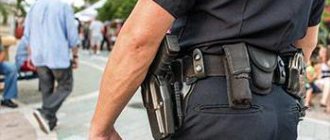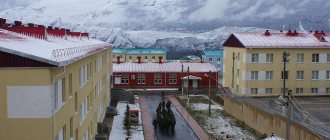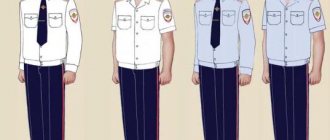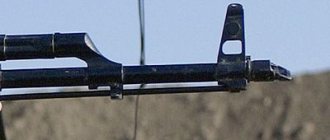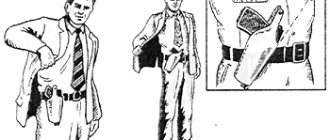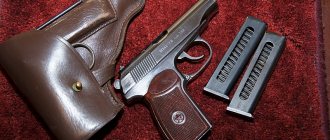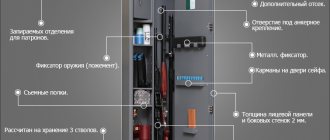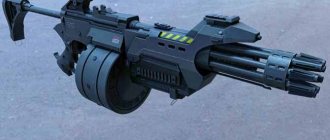Today, questions regarding the storage of civilian weapons at home have not lost their relevance, and they arouse interest not only among new hunters, but also among experienced amateurs. The best option to follow the letter of the law is to keep in constant contact with the licensing department employees.
Unfortunately, in different regions provisions in legislative acts are interpreted differently, since the text of these provisions contains a lot of controversial issues. Only a comprehensive analysis of all existing standards will allow us to remove those gaps over which disputes often arise.
Gun Storage Basics
The main standard on which the entire legislative framework is based is set out in the law on weapons. Specific text regarding the storage of service or civilian weapons is located in Article 22 of this law. The rules for storing ammunition for purchased weapons are also defined here.
If we consider traumatic weapons, we should generalize the concept a little. Recently, such terminology is no longer used, and the trauma weapons we are used to are classified as limited-kill firearms.
Initially, the owner must be given the right of custody. For this purpose, he receives a special license from the LRR department. In turn, we note that weapons that are not subject to registration can be stored without the appropriate permits, and security issues are defined in unspoken rules. Such weapons include:
- primarily low-power air guns;
- Signal weapons join this list;
- products structurally similar to weapons that are not weapons;
- as well as revolvers with a caliber of less than 6 mm.
There are no separate clauses in the weapons law that can be considered rules. It says that when storing civilian and service weapons, it is necessary to ensure the proper degree of security, as well as take measures to ensure their safety.
Looking ahead, we note that, of all measures, regulatory authorities only recognize the presence of a metal safe, and in the case of storing service weapons or a large arsenal (collection), a security alarm.
The mentioned law is not the only standard. It is practically duplicated by government decree No. 814 of July 21, 1998, as well as an internal order of the Ministry of Internal Affairs approving the instructions.
And already from the first demands, polemics and disputes begin to develop. To comply with legal requirements, a citizen is theoretically required to provide 24-hour security for the safe. According to experts, even a safe is not reliable protection for weapons, and it can be opened in a few seconds. But we skip this question, because in reality citizens are only able to equip a metal box or safe.
Moving on to a direct consideration of the main issue, we note that the rules for storing weapons, as well as cartridges purchased for this weapon, require their maintenance at the place of residence of the owner; this rule is considered the main one. The owner is even allowed to register the weapon at the place of temporary registration.
Police officers have the right to regularly check the conditions of keeping weapons. Such voluminous information indirectly contains the main requirement - weapons and ammunition must be stored in any metal box with a locking mechanism.
According to the instructions approved by the order of the Ministry of Internal Affairs, it follows that when storing smooth-bore or rifled hunting firearms in a room on the ground floor, the windows of this room must be equipped with hinged bars. An alarm may not be installed, but the safe must be secured to the wall. There are even requirements for mounting bolts; their diameter should not be less than 16 mm.
Use of weapons
Police officer
Use of a weapon by a police officer
The law talks about the use of weapons by police officers in the following situations:
- In order to protect civilians during a life-threatening attack. This is considered to be an impact that, if continued unimpeded, will lead to severe injury or death to a person.
- If a law enforcement officer is attacked, his health and life are threatened, there is an attempt to seize his service weapon.
Watch the video: - If an attacker tries to take possession of a police official car or other equipment used by law enforcement agencies.
- If a person refuses the lawful demands of law enforcement officers to surrender weapons, combat kits, explosives and radioactive substances carried with him, actively resists (waves ammunition, scatters toxic substances), and performs actions that pose a real threat to those nearby.
- In order to free the hostages. A police officer can only use a weapon against citizens who can cause physical harm or death to hostages. Weapons are not used against persons who are involved in a crime, but cannot cause physical harm to the victims.
- If necessary, detain an attacker while he is committing a serious crime against the health, life and property of others. At the same time, the suspect tries to escape from the crime scene. The police officer must personally see the fact of illegal actions, see that the act can be continued, and the attacker is trying to escape or resisting. If the policeman is called by witnesses and they claim that a crime has been committed, then the use of weapons is not allowed, since the person may not be involved in these acts.
- If you need to repel an armed attack, as well as an assault by a group of attackers on government premises, various public institutions, organizations and private housing.
- To prevent the escape of a detained citizen.
- A person placed in custody.
- A citizen sentenced to a certain term of imprisonment.
- To stop attempts to liberate such citizens by force.
We have indicated the main points that the law on the use of weapons by a police officer stipulates. See also the material about what you need to carry an air pistolZ.
Employees of the Ministry of Internal Affairs
Use of weapons by police
A law enforcement officer can use a service weapon (for example, a PMM pistol) when the following situations arise:
- When it is necessary to stop a vehicle (moving) by mechanically damaging it, if a citizen, through his actions, creates a dangerous situation for surrounding citizens, but does not respond to multiple requests from a police officer to stop.
- To neutralize an animal that threatens the lives of citizens.
- To give urgent danger signals, perform a warning signal to call for help.
- To destroy locking structures (various devices and their elements) that prevent a police officer from legally entering a residential or any other premises.
An employee of the Ministry of Internal Affairs has the right to enter residential, administrative and business buildings of citizens at any time of the day. In this case, the presence of the homeowners or authorized persons is not necessary.
Wearing rules
Carrying ammunition and weapons may be available to citizens only if they have a special document issued by the licensing department. But if self-defense means are allowed to be carried on the condition that there is no cartridge in the chamber and only if there is a holster, then carrying firearms for hunting or sports weapons is allowed during hunting, training shooting, as well as during competitions in sports where the use of weapons.
A strict restriction on carrying is implied in the event of identified technical malfunctions of the weapon itself or cartridges. As for gas cans and sprayers, they are prohibited from being used after the expiration date. As an exception, it is permitted to use such weapons during examinations and technical tests.
The main duty of a citizen who has a weapon is to carry the appropriate permit for it. During hunting, hunters are required to wear and, when required by regulatory authorities, present an identification card, as well as a hunting ticket.
A controversial issue arose with the release of a government decree, which talks about making some changes to the rules for carrying and handling weapons. The phrase saying that a citizen has the right to carry a weapon as a means of self-defense was taken literally by society. The vast majority of owners regarded this gesture as permission to carry any weapon, including bladed and long-barreled weapons.
However, an explanation for this resolution was immediately published. It says that we are talking only about short-barreled weapons of the OOOP category. Carrying should not be confused with transportation, since transportation standards are defined for legal entities.
Test with answers on the topic “Gunshot injuries in forensic medicine”
Gunshot injuries are different from other mechanical injuries. In cases of the use of firearms, law enforcement officers face a number of specific issues. Answering these questions requires doctors to have special theoretical knowledge and certain technical techniques. The solution to these issues is possible only on the basis of the currently known patterns of formation of gunshot injuries, their signs and characteristics. The knowledge and skills acquired in the process of studying this topic will help the doctor to correctly understand the tasks of the investigation and, when preparing medical documents, to record in them all the data that is important not only for the clinic, but also for the investigation. Based on this knowledge, he will be able, if necessary, to provide direct assistance to the investigation as a medical specialist in the field of forensic medicine.
1. The diagnostic sign of the wedge-shaped action of a firearm projectile is considered
1) inverted wound edges; 2) the presence of a wiping belt; 3) absence of the “minus tissue” sign; + 4) the presence of additional skin breaks; 5) the presence of a belt of sedimentation.
2. In the classification of projectiles by design, they exclude
1) jacketed bullets; 2) shellless bullets; 3) multi-shell bullets; + 4) semi-jacketed bullets.
3. What damaging effects do unburned powder have?
1) biological; 2) electric; 3) chemical; 4) mental; 5) mechanical. +
4. Excluded from the list of damaging factors of a shot
665323
1) soot; + 2) pre-bullet air; 3) powder gases; 4) secondary projectiles; 5) parts of weapons.
5. The prevalence of the molecular shock zone is due to:
1) the length of the wound channel; 2) kinetic energy of the bullet; + 3) bullet speed; + 4) density of damaged tissues; + 5) bullet mass. +
6. An entry gunshot wound can form
1) arrow; 2) wad; + 3) glass fragment; 4) knife; 5) screwdriver.
7. Damage caused by a gunshot is considered to be
1) rifle bayonet; 2) rifle butt; 3) shot gases; + 4) cleaning rod; 5) pistol handle.
8. A bullet with high kinetic energy has an impact on the obstacle
1) bruising; 2) wedge-shaped; 3) piercing; 4) contusion; 5) punchy. +
9. At which of the shot distances, factors accompanying the shot are detected only on the skin around the entrance gunshot wound?
1) at a shooting distance with a side support; 2) at a shooting distance with a sealed stop; 3) at a distance beyond the influence of accompanying factors; 4) at a distance within the influence of accompanying factors; + 5) at a shooting distance, the stop is not sealed.
10. Gun grease fluoresces in ultraviolet rays
1) greenish color; 2) bluish color; + 3) reddish color; 4) yellowish color; 5) grayish color.
11. As a sign of a shot distance with a leaky stop, exclude
1) the presence of factors accompanying the shot along the wound channel; 2) the presence of factors accompanying the shot only on the skin around the entrance wound; + 3) reddish coloration of soft tissues along the wound channel; 4) the presence of blood in the bore of the weapon.
12. Signs of a gunshot entry hole on the flat bones of the skull are:
1) cone-shaped defect on the outer bone plate; 2) smooth edges of the defect on the inner bone plate; 3) cone-shaped defect on the internal bone plate; + 4) smooth edges of the defect on the outer bone plate. +
13. The main damaging factor in gunshot injury is
1) mechanical action of powder gases; 2) mechanical action of oils; 3) mechanical action of unburned powder; 4) mechanical action of soot; 5) mechanical action of the projectile. +
14. The condition for the formation of the Vinogradov phenomenon is
1) the distance between obstacles is from 3 to 6 cm; 2) the distance between obstacles is more than 5 cm; 3) projectile speed less than 500 m/s; 4) projectile speed more than 500 m/s; + 5) the presence of a single-layer barrier.
15. Powder gases can have the following effects:
1) biological; 2) mental; 3) mechanical; + 4) thermal; + 5) chemical. +
16. A diagnostic sign of an entry gunshot defect on flat bones may be
1) presence of chips; 2) longitudinally located cracks; 3) a cone-shaped defect, the base directed inward; + 4) cone-shaped defect with its base directed outward; 5) radially located cracks.
17. The diagnostic sign of the Vinogradov phenomenon is
1) small radius of soot deposition; 2) the obligatory combination of soot on clothing and its tears; 3) low intensity of soot deposition; 4) soot deposition on the front surface of the first layer of clothing; 5) deposition of soot in the form of a radiant crown on the 2nd layer of the barrier. +
18. Excluded from point-blank shot range types
1) side stop; 2) leaky stop; 3) warning; + 4) sealed stop.
19. Depending on the energy, a bullet can have the following types of effects:
1) wedge-shaped; + 2) contusion; + 3) punchy; + 4) explosive; + 5) compression.
20. The composition of a unitary live cartridge excludes the presence
1) wad; + 2) bullets; 3) powder charge; 4) capsule; 5) sleeves.
21. The diagnostic sign of an entry gunshot defect on long tubular bones is
1) presence of chips; 2) chipping from the inside; 3) chipping on the outside; 4) longitudinally located cracks; 5) radially located cracks. +
22. Excluded from the list of accompanying factors of the shot
1) unburned powder; 2) soot; 3) metal dust; 4) oils; 5) bullet. +
23. When examining a suspected gunshot injury, you should first establish
1) type of weapon; 2) gunshot nature of the damage; + 3) sequence of shots; 4) direction of the shot; 5) shot distance.
Article Rating
Is permission required to purchase and store traumatic weapons?
To purchase pneumatics with certain parameters, a special certificate is required - in accordance with Article No. 13 of the Federal Law-150 of December 13, 1996 . A permit is not required for the following characteristics:
- caliber, mm – less than 4 ½ ;
- shot power, J – less than 7 ½ .
Pneumatic parameters without a license
You should know: if any of the above indicators, or both are present at once, permission is required. Otherwise, the citizen will be brought to administrative responsibility. A fine is imposed and the combat unit is confiscated. The issue is regulated by Article No. 20.8 of the Code of Administrative Offenses of the Russian Federation . The fine is no more than 2 thousand rubles
If the pistol caliber is less than 7.5 J, a license is not required.
It is advisable for the future owner to understand the algorithm for calculating the power of the shot. This implies a value calculated using the school formula:
Ek = m×v2/2 , where
m – bullet mass in kilograms;
v – initial speed, m/s;
There is no point in doing the calculation yourself. You can use a calculator.
